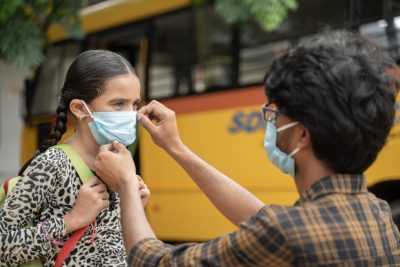Injuries are the leading cause of death and disability to children in the United States (ages 1-18 years) and unfortunately more children die from preventable injuries than all other diseases combined! Unfortunately, at St. Louis Children’s Hospital we know this all too well as we see thousands of injured children every year.
During the COVID-19 pandemic there are more children at home and without access to libraries, school or other safe havens, so we are seeing more injured kids than ever before. Combined with the COVID-19 pandemic, increasing virtual learning and cooler weather, more children are inside their homes. Now, it is even more important to make sure your home is child proofed and safe! Here are some important steps to take to safety proof your home this winter:
-
Smoke and Carbon Monoxide Detectors
- Install smoke detectors and carbon monoxide monitors and make sure they are in good working order. We recommend that there is at least one alarm on every level of your home, including the basement, or at each end of a mobile home. Ideally, they should be in hallways outside bedrooms, the kitchen, living room, and near the furnace.
- Test the alarms every month and change the batteries every year, unless directed otherwise by the manufacturer.
- Practice home fire drills. Make sure every person in your home knows how to leave any area of the home safely in case of a fire. Have an escape route and practice it!
- Carbon monoxide is a poisonous, odorless, tasteless gas that can quickly poison a person, particularly a child, because they breathe faster and inhale more of the gas for their body weight. To prevent carbon monoxide poisoning make sure that you check all fuel burning appliances, fireplaces, woodstoves and space heaters once a year or as recommended by the manufacturer. Never use any type of barbeque or hibachi indoors. Never leave an automobile running in the garage or other enclosed space. Make sure the flue is open during use of your fireplace.
-
Space Heaters
- The safest space heaters are portable electric space heaters. Those that use gas, kerosene or propane can spill and cause burns, especially with children running around. Make sure to plug the space heater directly into a wall outlet and avoid using an extension cord. Place it at least three feet away from flammable objects (including furniture like cribs, or children’s bedding, curtains, etc.). Keep the heaters and their cords out of reach of toddlers and make sure that they are placed on a flat, hard, non-flammable surface. When not in use, turn off the space heaters, including while you are asleep.
-
Fireplaces
- Never leave young children alone around a fireplace. If you leave the room while there is a fire burning or the fireplace is still hot, make sure to take your child with you. There are safety screens that you can install in front of a fireplace to reduce the risk of burns. Put fireplace tools and accessories out of your child’s reach as many of them are sharp and heavy and can cause injury.
-
Medicines
- Children are curious! Keep all medicines (including vitamins, supplements and over-the-counter products) out of reach of children. Store all cleaning products or other dangerous products out of reach of children and/or locked in a cabinet. Contact poison control if you have any questions.
-
Firearms
- It is estimated that 75% of children who live in a home with a firearm know where that firearm is located, despite what parents may think. The American Academy of Pediatrics (AAP) recommends that all guns should be stored unloaded and locked away. Ammunition should be locked away separately. Gun safes, locks and other options are available for secure storage. Make sure to ASK about the presence of unsecured guns in the homes where your children visit.
-
Outlets
- Cover all unused electrical outlets with plastic covers. Keep all appliances and their cords in good repair and unplug appliances when not in use.
-
Water Heaters
- Your home’s water heater’s thermostat should be no higher than 120 degrees Fahrenheit to prevent scald burns.
St. Louis Children’s Hospital is part of the Injury Free Coalition for Kids (IFCK), a national program whose efforts are anchored in research, education and advocacy with the goal to prevent injury in children. The coalition includes over 40 pediatric hospitals in the country and is one of the most successful and effective injury prevention programs. November 18, 2020, is our first annual National Injury Prevention Day. Please join us on social media #BeInjuryFree and show your commitment to keeping our kids safe by shining a light on injury prevention and wearing green! Visit www.injuryfree.org for more information.






Comments